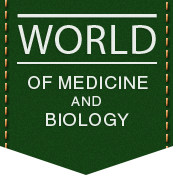| About the author: |
O. Sh. Mehraliev |
| Heading |
CLINICAL MEDICINE |
| Type of article |
Scentific article |
| Annotation |
When establishing indications for Holter ECG monitoring in 115 breast cancer patients, the criteria of the American Heart Association were used. The survey was carried out using the official versions of the EORTC QLQ-C30 questionnaires (a questionnaire approved by the European Organization for Research and Treatment of Cancer in 2005). The most common malignant neoplasms in the main group and in the control group were found in the upper quadrants of the mammary glands. Less often, the pathological process in both groups was diagnosed at the border of the inner quadrants. Compared with the control group, in the main group, the average 24 hours, average daily and average night heart rate was higher (p=0.001). Also in the control group, an increase in the maximum daily heart rate was revealed – here is the average dash. non-hyphenated 115.7±0.85 beats/min, versus 97.7±0.63 beats/min in the main group (p=0.001). When diagnosing metastatic lesions of lymph nodes, there is an increase in (corrected recovery time of sinus node function after AF paroxysm). Against the background of the lesion of regional lymph nodes, the minimum time interval of arousal by AV (P1-R1 min) increases by 152.6±1.08 ms, versus 138.4±1.18 ms, values recorded in the control group (p=0.001). The highest rates were recorded for two profiles “Pain” and “Fatigue” in the main group of patients burdened with metastases to regional lymph nodes (25.9±2.88 points and 44.2±1.78 points, p=0.001; 9.0±1.43 and 26.7±1.29, p=0.001, in the control and main groups, respectively). Thus, the best indicators in the control group are associated with the absence of serious complications of breast cancer, represented by metastatic lesions of the lymphatic system. |
| Tags |
quality of life, cancer, metastases, monitoring |
| Bibliography |
- Baevskij RM, Ivanov GG, Chirejkin LV, Gavrilushkin AP, Dovgalevskij PJa, Kukushkin JuA, i dr. Vestnik Aritmologii. 2001; 24: 65–78 [in Russian]
- Alexandre J, Cautela J, Ederhy S, Damaj G L, et al. Cardiovascular Toxicity Related to Cancer Treatment: A pragmatic approach to the American and European Cardio-Oncology Guidelines Joutnal of American Heart Association. 2029; 9:e018403 https://doi.org/10.1161/JAHA.120.018403
- Cao L, Hu W, Kirova Y, Yang Z, et al. Potential impact of cardiac dose–volume on acute cardiac toxicity following concurrent trastuzumab and radiotherapy. Cancer Radiothérapie 2014; 18: 119–124.
- Canario AC, Cabral PU, de Paiva LC, Florencio GL. Physical activity, fatigue and quality of life in breast cancer patients. Rev Assoc Med Bras. 2016; 62(1):38–44.
- Curran D, van Dongen JP, Aaronson NK, Kiebert G. Quality of life of early-stage breast cancer patients treated with radical mastectomy or breast-conserving procedures: results of EORTC Trial 10801. The European Organization for Research and Treatment of Cancer (EORTC), Breast Cancer Co-operative Group (BCCG). Eur J Cancer. 1998; 34( 3) :307–314.
- Duggan C, Dvaladze A, Rositch AF, et al. The Breast Health Global Initiative 2018 Global Summit on Improving Breast Healthcare Through Resource-Stratified Phased Implementation: methods and overview. Cancer. 2020; 126(suppl 10):2339–2352.
- Hyuna S ,Jacques F , Rebecca L. Global Cancer Statistics 2020: GLOBOCAN Estimates of Incidence and Mortality Worldwide for 36 Cancers in 185 Countries CA: A Cancer Journal for Clinicians2021; 71,3: 209–249 https://doi.org/10.3322/caac.21660
- Kadish H, Alfred EB, Alan H, Kennedy L, Bradley P, Knight JW, Mason CD, et. al. ACC/AHA Clinical Competence Statement on Electrocardiography and Ambulatory Electrocardiography A Report of the ACC/AHA/ ASP-ASIM Task Force on Clinical Competence Endorsed by the International Society for Holter and Noninvasive Electrocardiology. Circulation. 2001; 104: 3169–3178.
- Lanza M, Bergmann A, Ferreira MG, Paltrinieri EM. Quality of Life and Volume Reduction in Women with Secondary Lymphoedema Related to Breast Cancer. Int J Breast Cancer. 2015: 682–687.
- Lynce F, Barac A, Geng X, Dang C, et al. Prospective evaluation of the cardiac safety of HER2-targeted therapies in patients with HER2-positive breast cancer and compromised heart function: the SAFE-HEaRt study. Breast Cancer Res Treat. 2019 Jun;175(3):595–603. doi: 10.1007/s10549-019-05191-2
- Mond HG , Crozie I. The Australian and New Zealand Cardiac Implantable Electronic Device Survey: Calendar Year 2017 Heart Lung Circ 2019 Apr;28(4):560–566. doi: 10.1016/j.hlc.2018.11.018.
- Nardin S, Mora E, Varughese FM, D’Avanzo F, Vachanaram AR, Rossi V, Saggia C, Rubinelli S, Gennari A. Breast Cancer Survivorship, Quality of Life, and Late Toxicities. Front. Oncol. 2020;10:864. doi: 10.3389/fonc.2020.00864.
- Rebecca L, Kimberly D, Hannah E. Cancer Statistics. 2021 2021 Jan;71(1):7–33. doi: 10.3322/caac.21654.
- Zamorano JL, Lancellotti P, Rodriguez MD, Aboyans V. 2016 ESC Position Paper on cancer treatments and cardiovascular toxicity developed under the auspices of the ESC Committee for Practice Guidelines: The Task Force for cancer treatments and cardiovascular toxicity of the European Society of Cardiology (ESC). Eur Heart J. 2016; 37(36):2768–2801.
|
| Publication of the article |
«World of Medicine and Biology» №4(78), 2021 year, 105-110 pages, index UDK 618.19:922-007.05-228 |
| DOI |
10.26724/2079-8334-2021-4-78-105-110 |
